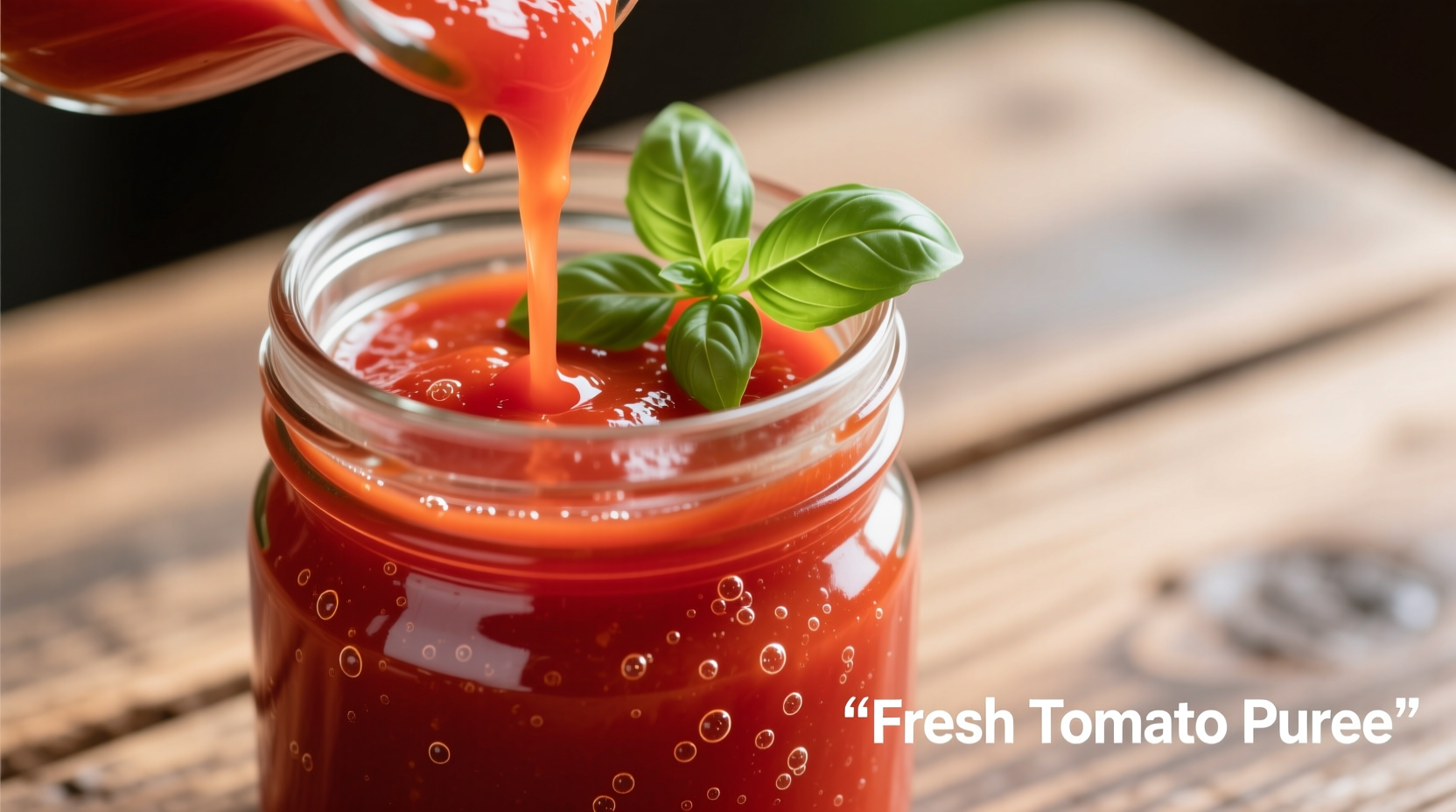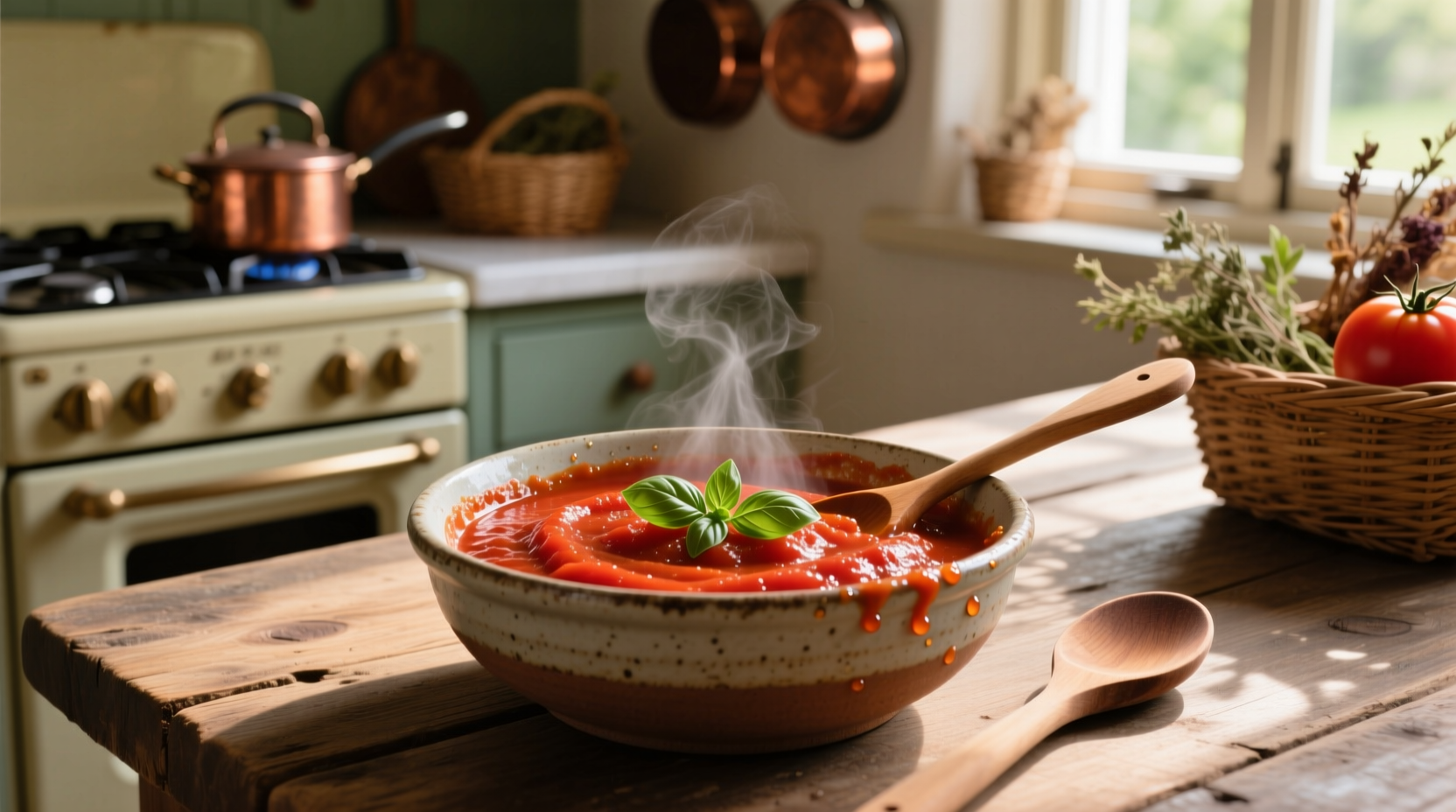The Essential Guide to Making Perfect Tomato Puree at Home
Homemade tomato puree transforms ordinary dishes into restaurant-quality creations. Unlike store-bought versions, fresh puree delivers vibrant flavor and complete control over ingredients. Whether you're preserving a garden harvest or elevating weeknight meals, this guide provides everything you need to master tomato puree preparation.
Understanding Tomato Puree: What It Is and Why It Matters
Tomato puree serves as the foundation for countless Italian, Mediterranean, and global dishes. But what exactly distinguishes puree from similar tomato products? Many home cooks confuse tomato puree with sauce and paste, leading to recipe failures.
| Product | Consistency | Preparation | Best Uses |
|---|---|---|---|
| Tomato Puree | Smooth liquid, no chunks | Simmered 20-30 minutes, strained | Base for sauces, soups, stews |
| Tomato Sauce | Thicker, seasoned | Cooked with herbs, longer simmer | Pasta dishes, pizza |
| Tomato Paste | Concentrated, thick | Reduced 4-6 hours | Flavor enhancer, small quantities |
This comparison clarifies why proper technique matters when you make tomato puree from fresh tomatoes. Using the wrong consistency can throw off recipe balances and cooking times.
Your Tomato Puree Timeline: From Vine to Jar
Creating quality puree follows a precise sequence. Understanding this timeline prevents common mistakes:
- Selection (5 minutes): Choose ripe, blemish-free tomatoes
- Preparation (10 minutes): Wash, core, and quarter tomatoes
- Cooking (15 minutes): Simmer until softened but not broken down
- Processing (5 minutes): Blend and strain through fine mesh
- Storage (5 minutes): Cool and transfer to containers
This 30-minute homemade tomato puree process preserves fresh flavor while achieving professional texture. Rushing any step compromises quality—especially the straining phase, which removes bitter seeds and tough skin.
Equipment You Actually Need
Professional results don't require specialized tools. Gather these basics:
- Large stainless steel pot (prevents metallic taste)
- Immersion blender or regular blender
- Fine-mesh strainer (essential for smooth texture)
- Wooden spoon
- Storage containers (glass jars or freezer bags)
No food mill? Use a standard blender followed by straining. Skip the tomato peeling step—proper cooking loosens skins for easy removal during straining.

Step-by-Step: Making Perfect Tomato Puree
Follow this professional chef-tested method for consistently smooth results:
1. Selecting the Right Tomatoes
Roma (plum) tomatoes work best due to lower water content and fewer seeds. For homemade tomato puree with intense flavor, choose vine-ripened varieties. Avoid refrigerated tomatoes—they lose flavor compounds below 55°F (13°C) according to USDA research on tomato quality preservation.
2. Preparation Process
Wash 2 pounds of tomatoes, remove cores, and quarter. No need to peel—simmering loosens skins naturally. For acid balance (critical for safe preservation), add 1 tablespoon lemon juice per pint as recommended by the National Center for Home Food Preservation.
3. Cooking Technique
Simmer tomatoes uncovered for 15-20 minutes until softened but not completely broken down. Stir occasionally. Overcooking creates bitter flavors as natural sugars caramelize excessively. The ideal texture shows tomatoes collapsed but still holding some shape.
4. Straining for Professional Results
This critical step separates smooth tomato puree from seedy pulp. Press cooked tomatoes through a fine-mesh strainer using a wooden spoon. Discard seeds and skin. For ultra-smooth results, blend first then strain—a technique used in professional kitchens to achieve silky texture.
Storage Solutions for Year-Round Use
Proper storage maintains quality and safety. Consider these options:
- Refrigeration: Store in airtight containers for up to 5 days
- Freezing: Portion into ice cube trays, then transfer to bags (keeps 12 months)
- Canning: Process pints in boiling water bath for 35 minutes (follow USDA guidelines)
When storing tomato puree properly, leave 1-inch headspace in containers to accommodate expansion during freezing. Never store puree in metal containers—tomato acidity reacts with metals.
When Homemade Puree Shines (and When to Reach for Canned)
Understanding context boundaries prevents kitchen disasters. Use homemade puree when:
- You need bright, fresh tomato flavor (summer dishes, light sauces)
- Controlling sodium content is important
- You're making delicate sauces where subtle flavors matter
Avoid substituting homemade puree when:
- Recipes specify tomato paste (concentration differs)
- Acid balance is critical (like canning tomatoes)
- You need consistent thickness for pizza sauce
Culinary Applications That Shine
Maximize your uses for tomato puree in cooking with these professional tips:
- Soup base: Replace broth with puree for richer tomato soup
- Sauce foundation: Simmer with garlic and herbs for 20 minutes
- Stew enhancer: Add during last 30 minutes of cooking
- Marinade component: Combine with olive oil and spices
For restaurant-quality results, always taste and adjust seasoning after adding puree—homemade versions vary in natural sweetness and acidity.
Troubleshooting Common Issues
Fix these frequent problems:
- Too watery: Simmer uncovered 5-10 minutes to reduce
- Too thick: Stir in small amounts of tomato juice or water
- Bitter taste: Add 1/4 teaspoon sugar or pinch of baking soda
- Grainy texture: Strain again through cheesecloth
Remember that tomato varieties affect results—adjust techniques based on your specific tomatoes' water content and ripeness.
Preserving Peak Flavor: Expert Tips
Professional chefs maximize flavor with these techniques:
- Add puree to dishes during final cooking stages to preserve freshness
- Freeze in recipe-sized portions (1/2 cup works for most sauces)
- Never boil puree after straining—gentle warming preserves texture
- Combine with roasted garlic for deeper flavor profiles
For best tomatoes for making puree, choose peak-season Romas between July and September when flavor compounds are most concentrated.











 浙公网安备
33010002000092号
浙公网安备
33010002000092号 浙B2-20120091-4
浙B2-20120091-4